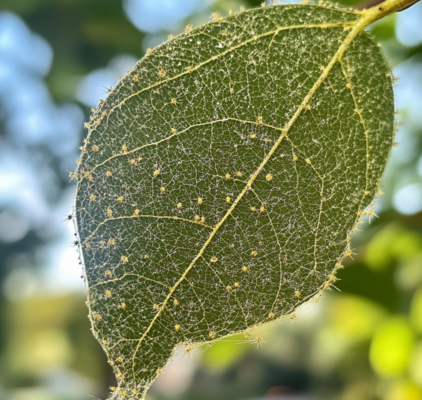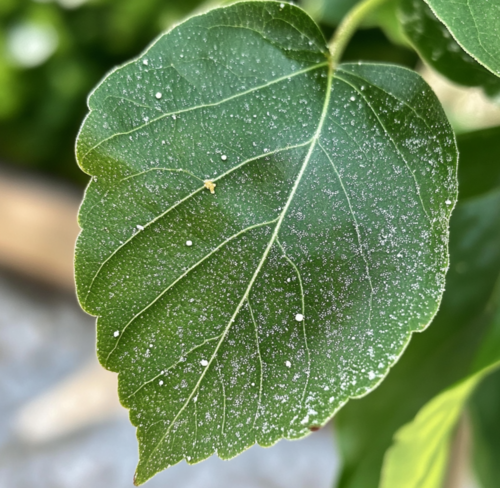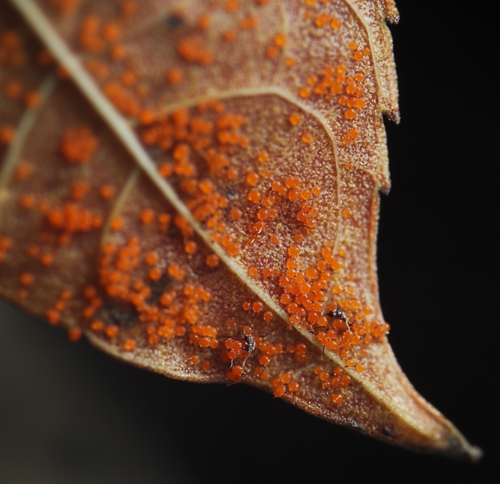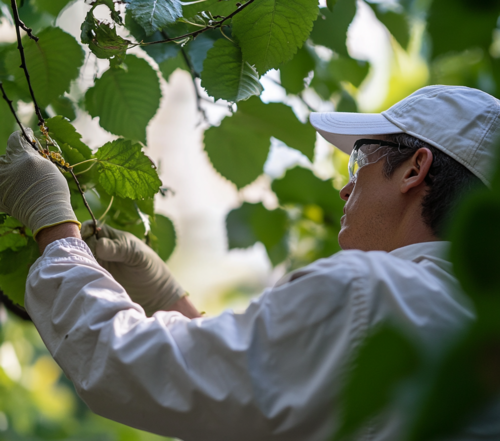Pest of the Month: Spider Mites

Introduction
Spider mites might be tiny, but their impact on your trees and plants can be enormous—even during the winter months. These pests are a year-round threat, making it crucial to stay vigilant and proactive in managing them.
At Arborist Now, we’re dedicated to helping you protect your trees from pests and diseases. Each month, we spotlight a common pest to keep you informed and prepared. This month, we’re diving into the fascinating yet destructive world of spider mites.
What Are Spider Mites?
Spider mites are small arachnids belonging to the Acari family Tetranychidae, which includes over 1,200 species. These pests are notorious for feeding on a wide range of plants—more than several hundred species, in fact.
Key Characteristics of Spider Mites:
- Size: Less than 0.04 inches (1 mm) long.
- Color: Varies from red, green, yellow, to brown.
- Habitat: Often found on the undersides of leaves, where they spin silk webs for protection.
- Reproduction: Female mites can lay up to 20 eggs per day and live 2–4 weeks, producing hundreds of eggs in their lifetime.
Spider mites thrive in warm, dry conditions (around 80°F). Under ideal circumstances, their lifecycle—from egg to mature adult—can take as little as five days. This rapid reproduction allows them to adapt quickly and develop resistance to many pesticides, making infestations difficult to control.
How to Identify Spider Mite Infestations

Close-Up of Spider Mite Damage on a Green Leaf
Not sure if your trees or plants are under attack? Here's what to look for:
Visible Signs:
- Leaf Damage: Small, light-colored spots or a bronze appearance on leaves.
- Silk Webbing: Fine webbing on the undersides of leaves and branches.
- Mites: With the naked eye, spider mites appear as tiny specks of red or mixed colors.
Pro Tip:
Use a magnifying glass to confirm the presence of spider mites. Gently shake a leaf over a sheet of white paper; if tiny specks move, you likely have an infestation.
How Do Spider Mites Damage Trees?

Spider Mites on a Dry Leaf - A Detailed View
Spider mites damage trees by puncturing plant cells to feed on their contents. While a small number of mites may not cause noticeable harm, large infestations can severely weaken plants and trees.
Effects on Plants and Trees:
- Leaf Discoloration: Leaves may turn yellow, red, or bronze before falling off.
- Webbing: Heavy infestations produce dense webs that can cover twigs, fruits, and leaves.
- Reduced Crop Yields: Fruit trees and vegetable plants can suffer significant yield losses, especially if water stress compounds the damage
- Aesthetic Damage: Ornamentals lose their visual appeal, which can be particularly concerning for landscaped areas.
Long-Term Impacts:
Severe infestations can lead to long-term stress for trees, affecting their ability to produce fruit or recover fully in the following seasons.
How to Prevent and Control Spider Mites
Spider mites are most active during cooler weather, typically in late fall and early spring. Proactive care and prevention are key to minimizing their impact.
Prevention Tips:
1. Maintain Plant Health:
- Keep plants and trees well-watered
- Remove dirt, debris, and dead leaves regularly.
2. Create an Unfavorable Environment:
- Spider mites prefer dry conditions, so maintain proper humidity levels where possible
3. Monitor Regularly
- Inspect your plants frequently, especially the undersides of leaves
Natural Predators:
Introduce beneficial insects like ladybugs, lacewings, or predatory mites to control spider mites naturally. Many garden supply centers offer these predators for purchase.
Pesticide Use:
If natural methods don’t work, consider:
- Insecticidal Soaps and Oils: Effective yet gentle on plants.
- Caution: Avoid overusing pesticides, as they can harm beneficial predators.
Why Choose Arborist Now?

Arborist Conducting a Close Inspection of Tree Leaves
Spider mites can be challenging to manage, but a combination of prevention and timely intervention can make all the difference. If you’re dealing with an infestation or need expert advice, Arborist Now is here to help.
Our team of skilled arborists offers tailored solutions to protect your trees and maintain their health year-round. Contact us today to schedule an inspection or consultation.
Our Final Thoughts on Spider Mites
Understanding spider mites and their behavior is the first step in preventing and managing infestations. By maintaining healthy plants and utilizing natural or chemical controls when necessary, you can protect your trees and gardens from these pesky invaders.
For expert pest control solutions, trust Arborist Now to keep your trees thriving, no matter the season.
Originally posted on November 30, 2018





